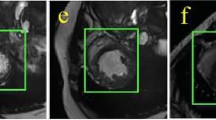Abstract
Medical images such as CT can provide important reference value for doctors to diagnose diseases. Identifying and segmenting lesions from medical images is crucial for its diagnosis and treatment. However, unlike other segmentation tasks, medical image has the characteristics of blurred boundaries and variable lesions sizes, which poses challenges to medical image segmentation. In this paper, we propose a Boundary-Guided Buffer Feedback Network(BGBF-Net), using the boundary guidance module to combine the low-level feature map rich in boundary information and the high-level semantic segmentation feature map generated by the encoder module, and output the features that focus on the boundary, which is used to enhance the attention of the decoder to boundary features. The buffer feedback module is used to strengthen the network’s supervision of the decoder while speeding up convergence of the model. We apply the proposed BGBF-Net on the LiTS dataset. Comprehensive results show that the BGBF-Net improves by 2.36% compared to other methods in terms of Dice.
Financial Supported by Fujian Science and Technology Project (No. 2022I0003).
Access this chapter
Tax calculation will be finalised at checkout
Purchases are for personal use only
Similar content being viewed by others
References
Adams, R., Bischof, L.: Seeded region growing. IEEE Trans. Pattern Anal. Mach. Intell. 16(6), 641–647 (1994)
Cao, H., et al.: Swin-Unet: Unet-like pure transformer for medical image segmentation. In: Karlinsky, L., Michaeli, T., Nishino, K. (eds.) Computer Vision – ECCV 2022 Workshops. ECCV 2022. LNCS, vol. 13803. Springer, Cham (2022). https://doi.org/10.1007/978-3-031-25066-8_9
Chen, J., et al.: TransUNet: transformers make strong encoders for medical image segmentation. arXiv preprint arXiv:2102.04306 (2021)
Chen, L.-C., Zhu, Y., Papandreou, G., Schroff, F., Adam, H.: Encoder-decoder with atrous separable convolution for semantic image segmentation. In: Ferrari, V., Hebert, M., Sminchisescu, C., Weiss, Y. (eds.) ECCV 2018. LNCS, vol. 11211, pp. 833–851. Springer, Cham (2018). https://doi.org/10.1007/978-3-030-01234-2_49
Chlebus, G., Meine, H., Moltz, J.H., Schenk, A.: Neural network-based automatic liver tumor segmentation with random forest-based candidate filtering. arXiv preprint arXiv:1706.00842 (2017)
Gruber, N., Antholzer, S., Jaschke, W., Kremser, C., Haltmeier, M.: A joint deep learning approach for automated liver and tumor segmentation. In: 2019 13th International conference on Sampling Theory and Applications (SampTA), pp. 1–5. IEEE (2019)
Gu, Z., et al.: CE-Net: context encoder network for 2D medical image segmentation. IEEE Trans. Med. Imaging 38(10), 2281–2292 (2019)
Han, X.: MR-based synthetic CT generation using a deep convolutional neural network method. Med. Phys. 44(4), 1408–1419 (2017)
He, K., Zhang, X., Ren, S., Sun, J.: Deep residual learning for image recognition. In: Proceedings of the IEEE Conference on Computer Vision and Pattern Recognition, pp. 770–778 (2016)
Huang, H., et al.: UNet 3+: a full-scale connected UNet for medical image segmentation. In: ICASSP 2020–2020 IEEE International Conference on Acoustics, Speech and Signal Processing (ICASSP), pp. 1055–1059. IEEE (2020)
Isensee, F., Jaeger, P.F., Kohl, S.A., Petersen, J., Maier-Hein, K.H.: nnU-Net: a self-configuring method for deep learning-based biomedical image segmentation. Nat. Methods 18(2), 203–211 (2021)
Kass, M., Witkin, A., Terzopoulos, D.: Snakes: active contour models. Int. J. Comput. Vision 1(4), 321–331 (1988)
Li, X., Chen, H., Qi, X., Dou, Q., Fu, C.W., Heng, P.A.: H-Denseunet: hybrid densely connected UNet for liver and tumor segmentation from CT volumes. IEEE Trans. Med. Imaging 37(12), 2663–2674 (2018)
Long, J., Shelhamer, E., Darrell, T.: Fully convolutional networks for semantic segmentation. In: Proceedings of the IEEE Conference on Computer Vision and Pattern Recognition, pp. 3431–3440 (2015)
Ma, H., Xu, C., Nie, C., Han, J., Li, Y., Liu, C.: DBE-Net: dual boundary-guided attention exploration network for polyp segmentation. Diagnostics 13(5), 896 (2023)
Oktay, O., et al.: Attention U-Net: learning where to look for the pancreas. arXiv preprint arXiv:1804.03999 (2018)
Ronneberger, O., Fischer, P., Brox, T.: U-Net: convolutional networks for biomedical image segmentation. In: Navab, N., Hornegger, J., Wells, W.M., Frangi, A.F. (eds.) MICCAI 2015. LNCS, vol. 9351, pp. 234–241. Springer, Cham (2015). https://doi.org/10.1007/978-3-319-24574-4_28
Woo, S., Park, J., Lee, J.-Y., Kweon, I.S.: CBAM: convolutional block attention module. In: Ferrari, V., Hebert, M., Sminchisescu, C., Weiss, Y. (eds.) ECCV 2018. LNCS, vol. 11211, pp. 3–19. Springer, Cham (2018). https://doi.org/10.1007/978-3-030-01234-2_1
Yang, H., et al.: Is-Net: automatic ischemic stroke lesion segmentation on CT images. IEEE Trans. Radiat. Plasma Med. Sci. 7(5), 483–493 (2023)
Zhang, J., Saha, A., Zhu, Z., Mazurowski, M.A.: Hierarchical convolutional neural networks for segmentation of breast tumors in MRI with application to Radiogenomics. IEEE Trans. Med. Imaging 38(2), 435–447 (2018)
Zhou, Z., Rahman Siddiquee, M.M., Tajbakhsh, N., Liang, J.: UNet++: a nested U-net architecture for medical image segmentation. In: Stoyanov, D., et al. (eds.) DLMIA/ML-CDS -2018. LNCS, vol. 11045, pp. 3–11. Springer, Cham (2018). https://doi.org/10.1007/978-3-030-00889-5_1
Author information
Authors and Affiliations
Corresponding authors
Editor information
Editors and Affiliations
Rights and permissions
Copyright information
© 2024 The Author(s), under exclusive license to Springer Nature Singapore Pte Ltd.
About this paper
Cite this paper
Wang, Y., Wang, K., Lu, X., Zhao, Y., Liu, G. (2024). BGBF-Net: Boundary-Guided Buffer Feedback Network for Liver Tumor Segmentation. In: Liu, Q., et al. Pattern Recognition and Computer Vision. PRCV 2023. Lecture Notes in Computer Science, vol 14429. Springer, Singapore. https://doi.org/10.1007/978-981-99-8469-5_36
Download citation
DOI: https://doi.org/10.1007/978-981-99-8469-5_36
Published:
Publisher Name: Springer, Singapore
Print ISBN: 978-981-99-8468-8
Online ISBN: 978-981-99-8469-5
eBook Packages: Computer ScienceComputer Science (R0)




